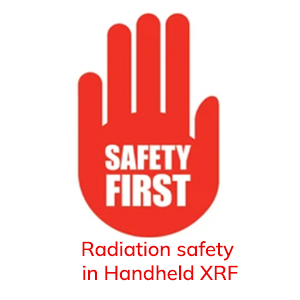Here are 3 steps to find best Handheld XRF Analyzer that is perfect for you.
Some well-known brands such as Thermo Fisher Scientific, Olympus, Hitachi, and Elvatech have produced the best quality XRF Handheld Analyzers. But do you know which Handheld XRF Analyzer is best for you.
1. Choose your detector
First, you must identify what actions you want to give to the sample, and what data you need. If you have, you must determine the type of detector you need. There are two types of detectors, namely PIN and SDD to determine which detector you need more, you certainly need to recognize the characteristics of both PIN is older and cheaper than SDD. However, when compared to SDD, PIN has a lower sensitivity level. For those of you who want to research samples with lightweight elements such as aluminum, sulfur, magnesium, and phosphorus, SDD can be the right choice. Meanwhile, when compared to PIN, SDD has lower test speed and limit of detection (LOD).
2. Determine the anode and features according to your needs
Anode materials commonly used in XRF Analyzer include rhodium, silver, and tungsten. For lightweight elements such as magnesium and aluminum, rhodium is the right choice. For samples with elements heavier like cadmium, you better choose analyzer with tungsten as an anode. Meanwhile, silver has quality analysis under rhodium and tungsten but is a good compromise of an anode. To determine the correct anode, you should first consult with experts. In addition to the anode, the important things you need to consider are the complete features. If you feel that research requires documentation, you need to choose an analyzer equipped with a camera. If you analyze areas that tend to be small, you need an analyzer equipped with a collimator feature. Furthermore, if you need fast and efficient data transfer, you must pay attention to the availability of data transfer features such as Wi-Fi and Bluetooth.
3. Select specifications according to the environment where you work
Before choosing which handheld XRF Analyzer best for you, you also have to consider the environment where you work. This is because the environment will also affect the durability of the tool you are using. As for several factors you need to consider, such as the IP rating, drop tested, and operating temperature of the product you want to buy.
For those of you who work in extreme environments, you need to pay attention to its IP rating and operating temperature. This is because two parameters mentioned before indicating the resistance of the analyzer to dust, water, and extreme temperature. Moreover, you also need to pay attention to the drop tested of the product that you want to choose. The more resilient it is, the longer the possibility that the tool can be used.
After reading the steps above, have you determined which handheld XRF Analyzer is best for you? If not, you can also search further through reviews of previous users. Choosing an XRF Analyzer is indeed not easy because each has the advantage of different features. Therefore, the most important thing is that you have to choose products with features that support and complement each other
